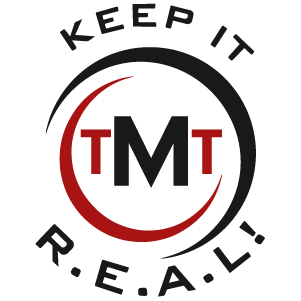As an MSP owner, the decision to hire a sales representative marks a pivotal moment in your business journey. My experience has taught me the importance of being thoroughly prepared for this step. This guide reflects my path and the lessons learned along the way, from crafting a powerful sales script to developing long-term lead generation strategies.
1. A Scripted Sales Process
In my journey, I’ve realized the absolute necessity of a scripted sales process. It’s not just about having a script; it’s about mastering it. I always say, ‘Know your script, but don’t sound scripted.’ It’s crucial to handle objections effectively, and this comes from knowing your script inside out. For instance, when a prospect objects to price, having a rehearsed, yet natural response can make all the difference. It’s not just about the words; it’s about understanding the customer’s mindset and responding appropriately. I make sure my sales team memorizes the key parts of the script, especially the sections on handling common objections and closing the sale.
2. An Onboarding Plan
When it comes to onboarding a new sales rep, I’ve learned that a structured plan is key. In the first week, it’s all about product training and understanding the company culture. By the second week, we dive into the sales process, going over the script in detail. Practice makes perfect. Around the third week, it’s about shadowing calls and learning from experienced team members. The following weeks gradually increase in responsibility, leading up to the sixth month when they should be fully onboarded and comfortable with the sales process. This gradual ramp-up is essential for building confidence and competence in a new sales rep.
3. Marketing Support
The success of a sales rep is heavily dependent on the marketing support they receive. Sales without marketing is like a car without fuel. We utilize a marketing automation platform to streamline our processes. It’s not just about sending emails; it’s about creating a journey for the prospect. A well-maintained CRM system is also crucial. It helps track customer interactions and ensures that the sales rep has all the necessary information at their fingertips. The synergy between marketing and sales is what drives our growth.
4. List Building And Management
Building and managing a prospect list is an art and a science. Your list is your goldmine. It’s not just about having a long list of contacts; it’s about having the right contacts. We focus on continuously updating and qualifying our list to ensure that our sales reps are reaching out to potential clients who are a good fit for our services. Regularly nurturing this list through targeted communication and updates is key to keeping our sales pipeline healthy and active.
5. The Right Technology
Incorporating advanced technology tools into our sales strategy has been transformative. Key among these is the use of sophisticated CRM (Customer Relationship Management) systems. These platforms not only store customer data but also track interactions and sales progress, making them invaluable for personalized follow-ups and understanding customer needs. Additionally, we use automated dialers for efficient call management, allowing sales reps to focus more on the conversation rather than manual dialing.
6. Understanding Sales Metrics
Tracking and understanding sales metrics has been a cornerstone of our strategy. Numbers tell a story. We meticulously track metrics like the number of calls per day, conversion rates, and the size of our prospect lists. This data helps us understand where we excel and where we need improvement. It’s about more than just meeting targets; it’s about fine-tuning our approach to ensure we’re as effective as possible.
7. Budgeting For Sales And Marketing
Understanding the financial aspect of sales and marketing is critical. I’ve learned to look closely at the numbers. Every dollar spent on marketing and sales should be an investment, not an expense. We budget carefully for digital marketing and customer acquisition, always keeping an eye on the ROI. It’s important to know how much you’re spending to acquire each customer and ensure that your marketing budget aligns with your sales goals. Proper budgeting in this area is essential for sustainable growth.
8. Long-Term Lead Generation Strategies
For long-term success, sustainable lead generation strategies are vital. I’ve learned patience is key. It’s a marathon, not a sprint. Our focus is on developing a robust digital marketing strategy that consistently feeds quality leads into our pipeline. This includes content marketing, SEO, and targeted advertising. Building a strong online presence and a reputation for expertise takes time, but it’s crucial for attracting the right clients and growing our business sustainably.
Conclusion
Building a successful sales team as an MSP requires a deep understanding of the sales process, effective training, marketing support, and the right use of technology. By sharing my experiences and the strategies I’ve employed, I hope to provide a comprehensive guide that helps you navigate this crucial aspect of your business. Remember, it’s a journey of continuous learning and adaptation, and with the right approach, you can achieve sustainable growth and success in your sales endeavors.


